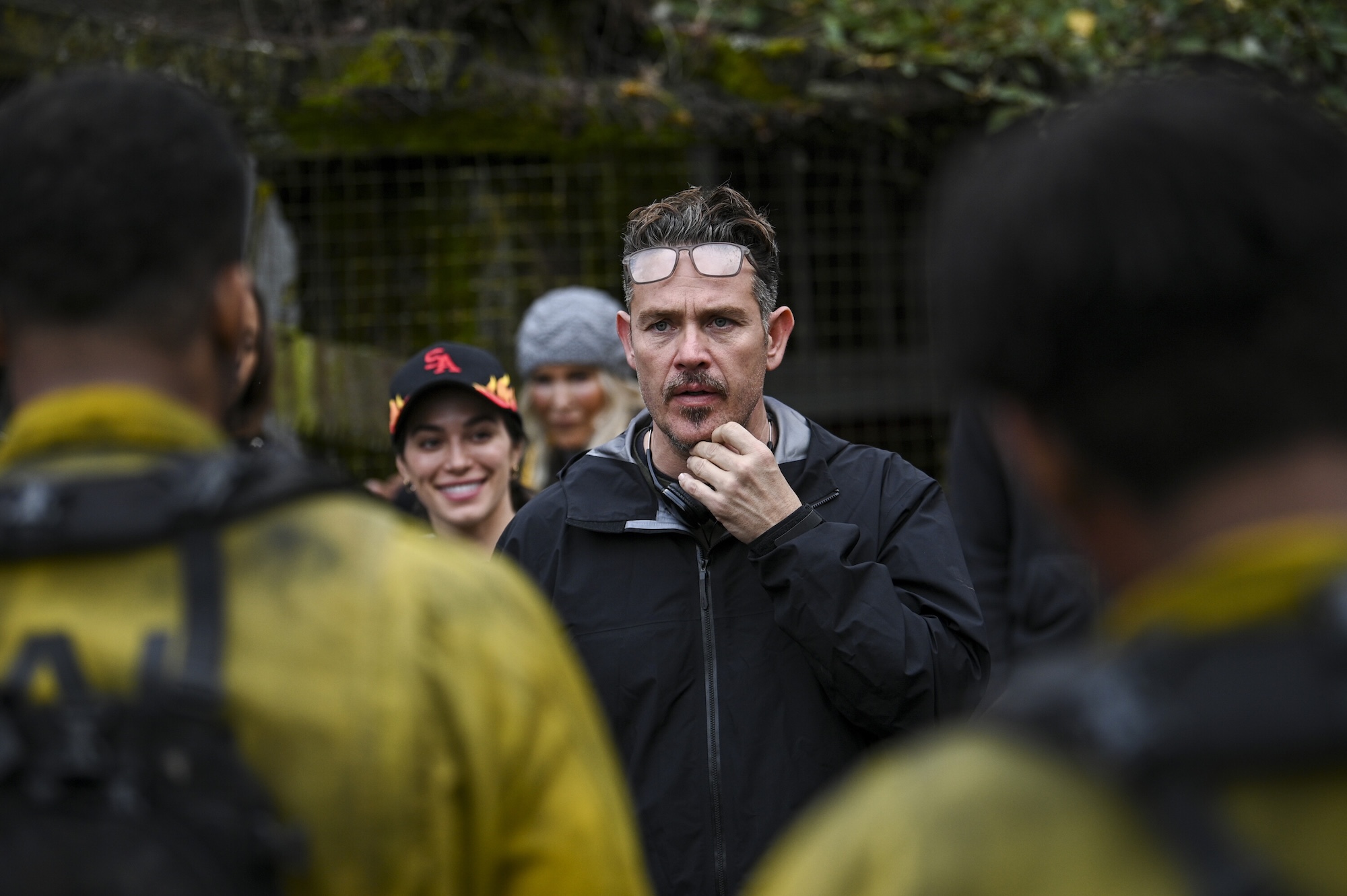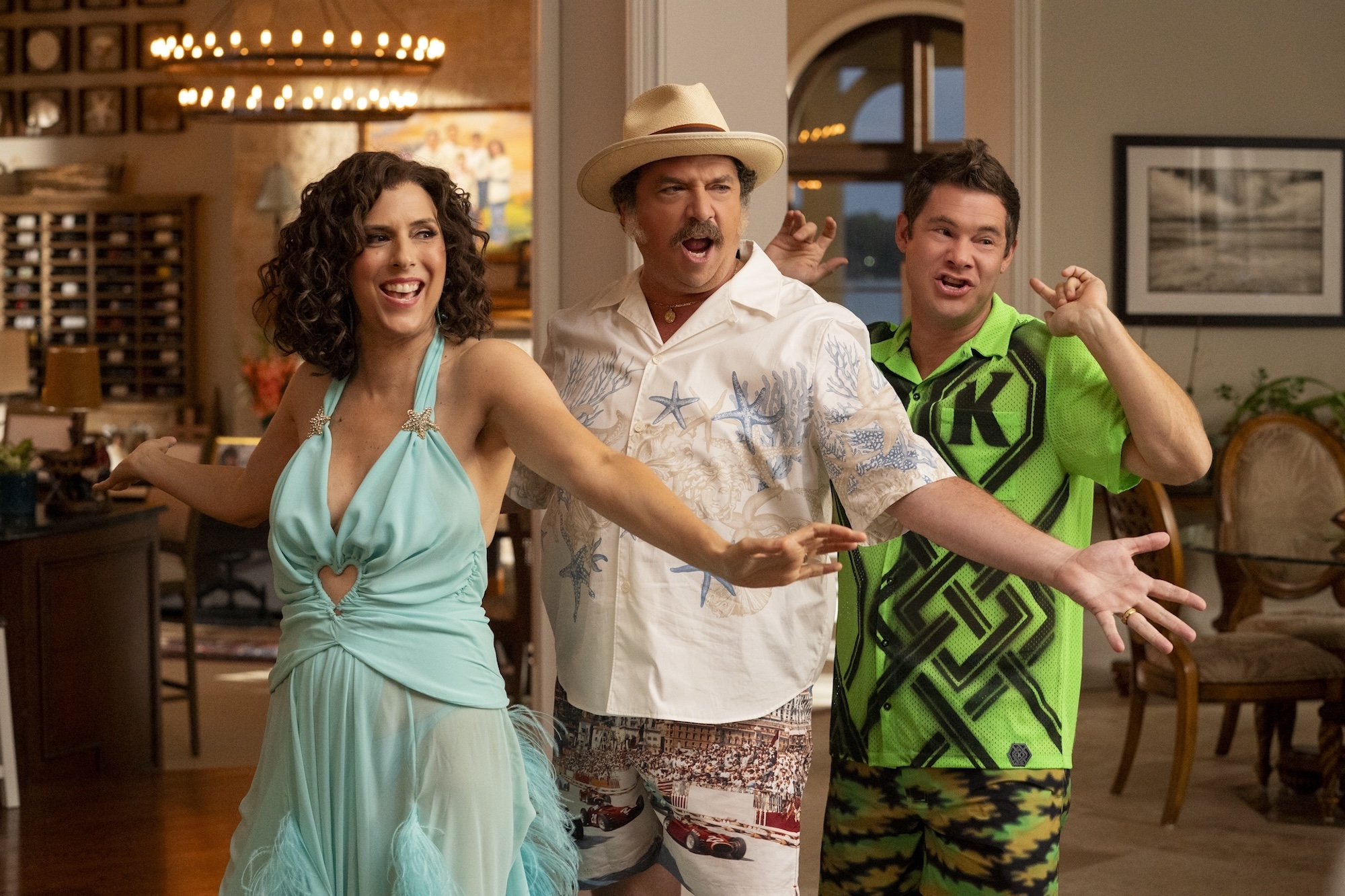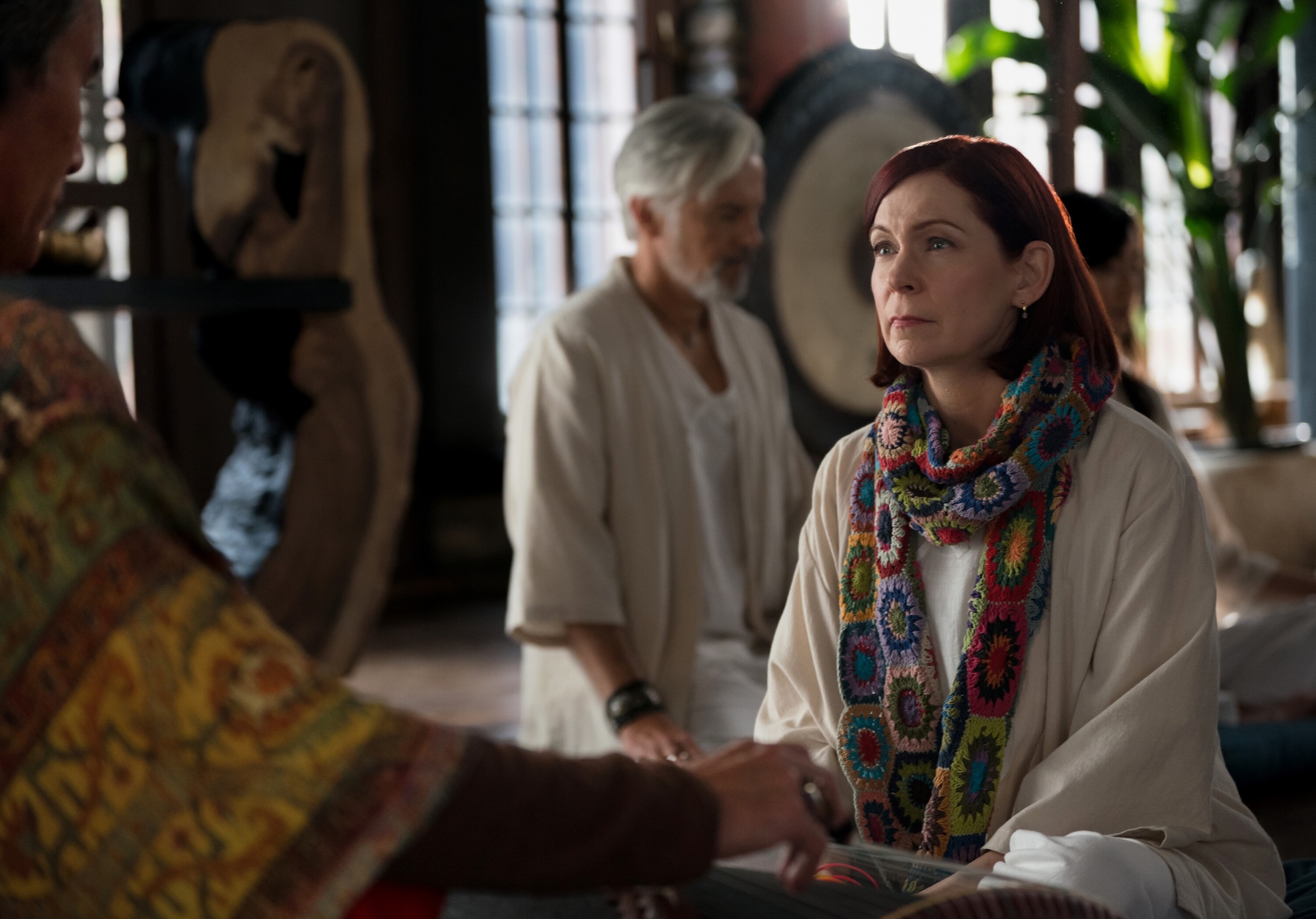‘HotD’ Episode 7 Mailbag: Which Came First, the Dragon or the Egg?
Only one episode remains in House of the Dragon’s second season, but it will be hard for the finale to top “The Red Sowing,” which continued Game of Thrones’ tradition of supplying spectacular penultimate entries. Before we all watch the finale, however, it’s time for another weekly mailbag, which this week features questions about dragon sex (seriously), Targaryen traditions, Westerosi medical practices, and more.
To appear in the final edition of the mailbag for this season, message me @zachkram on Twitter/X or at zach.kram@theringer.com after the finale airs.
Buff asks, “Do dragons reproduce the old-fashioned way?”
Do dragons lay eggs? Yes. Do we know how dragons produce eggs? No. That gets much more complicated, so let’s talk about dragon reproduction.
Westeros’s experts can’t pinpoint a dragon’s sex with any certainty. Consider this paragraph from Fire & Blood—a parenthetical tangent from when Jacaerys visits Winterfell to secure an alliance with Cregan Stark:
Mushroom also claims that Vermax left a clutch of dragon’s eggs at Winterfell, which is equally absurd. Whilst it is true that determining the sex of a living dragon is a nigh on impossible task, no other source mentions Vermax producing so much as a single egg, so it must be assumed that he was male. Septon Barth’s speculation that the dragons change sex at need, being “as mutable as flame,” is too ludicrous to consider.
This is an incredibly intriguing paragraph for several reasons:
- Are there actually dragon eggs hidden at Winterfell, languishing for more than a century until the time of Thrones? It’s possible! (And even more intriguing because Melisandre likes to talk about how she wants to “wake the stone dragons,” and we know Stannis ends up near Winterfell …)
- This paragraph emphasizes the difficulty in determining a dragon’s sex and seems to suggest a simple heuristic: A dragon is believed to be female if it lays eggs or male if it does not.
- Septon Barth is the in-universe historian with the apparently “ludicrous” opinion that dragons can “change sex at need”—but George R.R. Martin wrote in a blog post just this month that, when it comes to dragon lore in his story, “Septon Barth got much of it right.”
The brilliant Maester Aemon believes in Barth’s theory, as well. In A Feast for Crows, Aemon references Barth as part of his rationale for concluding that the Prince That Was Promised prophecy was actually about a princess, a.k.a. Daenerys. “No one ever looked for a girl,” Aemon says. “It was a prince that was promised, not a princess. … What fools we were, who thought ourselves so wise! The error crept in from the translation. Dragons are neither male nor female, Barth saw the truth of that, but now one and now the other, as changeable as flame. The language misled us all for a thousand years. Daenerys is the one, born amidst salt and smoke. The dragons prove it.”
Despite pertaining to a fantasy creature in a fantasy story, this isn’t actually a fantastical idea. Numerous real-world animals’ sex is “now one and now the other,” as Aemon says—this source says roughly 30 percent of non-insect species are hermaphroditic, including many kinds of fish, garden snails, and some frogs.
It’s unclear whether the other meaning of “dragon sex” is necessary for egg production. Martin never writes about fertilization in any of his books. (Thank goodness.) We know that Vermithor and Silverwing “oft coiled about one another” when relaxing, so perhaps they took after their riders in that department—otherwise, this might be a mystery best left unsolved.
Matt asks, “Did the Targaryens inadvertently sabotage themselves by placing dragon eggs in the cradles of their offspring? This essentially ensures that their heirs and other children will be bonded to the least imposing dragons available. If Jace and Luke were able to attempt to claim Vermithor and Silverwing once they were older instead of being bonded with Vermax and Arrax from birth/hatching, they would be much more intimidating chess pieces on the blacks’ side. Did the Targaryens underestimate the importance of having the most powerful dragons possible?”
The practice of placing dragon eggs in babies’ cradles began with Princess Rhaena Targaryen—not House of the Dragon’s Rhaena, but the daughter of King Aenys, who was born about 100 years before the events of the show. Rhaena was an adolescent when her younger siblings, Jaehaerys and Alysanne, were born, and she gave the future king and queen an egg apiece to nest with. Those eggs eventually hatched, and Vermithor and Silverwing emerged.
Years later, when Jaehaerys and Alysanne ruled and began birthing babes of their own, they continued the tradition that their sister had started. And from then on, Fire & Blood relates, “it became customary for the fathers and mothers of newborn princelings to place a dragon’s egg in their cradles … the children so blessed invariably bonded with the hatchlings to become dragonriders.”
This practice carried two advantages over letting young children try to claim veteran dragons whose riders had died. First, it furthered a family tradition for a house built on its relationships with dragons. And second, it nearly guaranteed a dragon bond for a young prince or princess, rather than relying on the uncertainty of pairing with an older dragon (as Dragon’s Rhaena discovered to her dismay).
Of course, Matt is right that this practice ended up backfiring for the blacks, especially, because Rhaenyra’s kids all ended up with smaller, younger, less fearsome mounts. But she didn’t know a civil war was coming when she gave her kids their eggs!
Until the Dance broke out, the Targaryens’ only concerns were external threats, and they had more than enough (literal) firepower without needing to worry about adding Vermithor and Silverwing to their stables. Consider the most famous battle in Westerosi history: the so-called Field of Fire during Aegon’s Conquest, when Aegon and his two sisters all flew together into battle for the first and only time. The result was absolute victory, as fewer than 100 of the Targaryens’ troops died, versus 5,000 of their opponents. The ensuing surrenders effectively ended the war.
And that was with only three dragons and little manpower. When Rhaenyra started birthing kids, for comparison, House Targaryen had plenty of pledged allies, as well as five adult dragons with adult riders: Vhagar (with Laena), Caraxes (with Daemon), Meleys (with Rhaenys), Seasmoke (with Laenor), and Syrax (with Rhaenyra).
No opposing house or military force could hope to stand up to all those dragons, even if the kids and their young dragons didn’t join the fray. Only the Targaryens could defeat the Targaryens, and nobody from the royal family saw that conflict coming.
Rachel asks, “If Rhaena has tried and failed to claim a dragon, why is she still alive (and not burned like all the others have been)?”
Rhaena’s previous failure to claim an older dragon is show-only material. (So is the presence of a dragon in the Vale, so this history helps explain her actions there.) In the book, her prior disappointment had come with a stunted hatchling: “Rhaena’s egg had hatched a broken thing that died within hours of emerging from the egg,” Fire & Blood says.
But the book gives examples of other characters’ failures to tame a dragon, which demonstrate that the result isn’t automatically death. In the text’s version of the Sowing, three times as many prospective dragonriders are “burned or maimed” as die (though it’s unclear how bad the burns are). And, the character Mushroom claims that he attempted to claim Silverwing, though the tale ends with him “running across the ward of Dragonstone with the seat of his pantaloons on fire, and nigh drowning when he leapt into a well to quench the flames.” Fire & Blood deems Mushroom’s story “unlikely,” but perhaps the theory is sound, and Rhaena could have suffered a short-term scare but avoided lasting damage.
In “The Red Sowing,” Rhaenyra was awfully cavalier with the lives of all the Targaryen bastards who filed in front of Vermithor. But one imagines that when the wannabe dragonrider was a legitimate Targaryen of the royal line, the dragonkeepers would have taken more caution to ensure Rhaena’s safety even in the event of an unsuccessful match.
Kenny asks, “What’s the clock situation in Westeros? I believe so far in HotD we’ve had references to the ‘Hour of the Owl,’ the ‘Hour of the Wolf,’ and maybe the ‘Hour of the Cat (or Bat or Rat).’ What are the various hours named?”
Here are the known nighttime hours in Westeros, in order:
- Hour of the bat
- Hour of the eel
- Hour of ghosts
- Hour of the owl
- Hour of the wolf
- Hour of the nightingale
Bats, eels, and owls are nocturnal. (I learned this about eels while doing research for this piece.) Presumably, ghosts are nocturnal, too. The “hour of the wolf” is a reference to the time around 3 a.m. in European folklore. Nightingales sing around dawn.
In Martin’s story, some of these time periods receive more description than others. Fire & Blood implies that the hour of the bat comes right after dusk when it says, “The sun had set and the hour of the bat was at hand.” And in multiple books, Barristan Selmy calls the hour of the wolf the “blackest” and “darkest” part of the night. (Fire & Blood also calls the wolf the “darkest” hour.)
However, we know about others only in relation to one another. In Fire & Blood, a serving man discovers Viserys’s corpse during the hour of the bat, then goes to inform Alicent, and ultimately the green council convenes in the hour of the owl. And for further detail, in A Dance With Dragons, a character named Quentyn Martell observes, “The hour of the bat gave way to the hour of the eel, the hour of the eel to the hour of ghosts,” and Cersei lists “the hour of the owl, the hour of the wolf, the hour of the nightingale” in order.
We might be missing another term or two. At one point, Fire & Blood says that Maegor the Cruel held a meeting until the hour of the wolf, and then dawn broke “hours later.” Beyond the nightingale, what else comes between the wolf and sunrise?
Maybe we’ll find out in future books. Not a single one of these terms appeared in Martin’s saga until A Feast for Crows, the fourth ASOIAF book, and Feast didn’t actually define any of them. (It just has two characters wake up and ask what hour it is, without any identifying features.) It’s only in Dance, the fifth (and still most recent) book, and the supplementary material like Fire & Blood, that Martin really began to develop his strange, literary time system.
Robert asks, “In his Episode 6 dive, Riley mentions Rhaenyra holding a presumed Valyrian steel sword, but is unsure of which sword it is. It isn’t Blackfyre (Aemond has it), and it’s not Dark Sister (Daemon has it). What happened to all the Valyrian swords? You’d think they would have more than two left.”
In “The Red Sowing,” the rebellious dragonkeeper who walks out on Rhaenyra calls dragons the “last magic of old Valyria in this sad world.” But other magic from the Freehold still exists in the form of Valyrian steel, which Martin once said is “a fantasy metal. Which means it has magical characteristics, and magic plays a role in its forging.”
To your question, I doubt whether the sword Rhaenyra holds is actually Valyrian steel, even though the blade looks to have the metal’s trademark ripples. (Perhaps this design was an in-universe imitation of Valyrian steel?) The historical record lists only two Valyrian steel swords ever held by the Targaryens. Fire & Blood says that during the Conquest, Aegon and Visenya wielded Blackfyre and Dark Sister, respectively—but the third dragonrider, Rhaenys, isn’t associated with any particular sword, nor are any of Aegon’s other companions, such as his (rumored) half-brother Orys Baratheon. If the Targaryens had extra Valyrian steel lying around, wouldn’t it have come up in the story by now?
As Riley noted back in 2001, a reader asked Martin, “Did the Targaryens own a family sword made of Valyrian steel, like Ice or Brightroar or Longclaw?” The author responded that the Targaryens had “several.” But Martin answered that question long before either of the known Targaryen blades entered his story. In fact, even now, the term “Dark Sister” never appears in the five core ASOIAF books, and “Blackfyre” appears only in reference to the spinoff house, not the sword that serves as its namesake.
So it’s possible that Martin said “several” not to mean a lot, but rather to differentiate the Targaryens from the other families implied by the questioner, all of whom possessed just one Valyrian steel sword apiece. (The Starks had Ice, the Lannisters had Brightroar before losing it, and the Mormonts had Longclaw.)
It makes some sense that the Targaryens wouldn’t have a special sword hoard, even though the family hails from old Valyria. Products of this magical metalwork were always exorbitantly expensive, even in the Freehold’s heyday. In a preview chapter of The Winds of Winter, Euron Greyjoy dons a suit of armor made entirely of Valyrian steel (like Aegon’s in Dragon), and his brother Aeron thinks, “Such things had been known 400 years ago, in the days before the Doom, but even then, they would’ve cost a kingdom.”
Swords use less material than full suits of armor, but the Targaryens might not have been able to afford much more Valyrian steel after they’d already spent a kingdom’s worth of gold on Aegon’s armor. The family rode dragons, sure, but they were “far from the most powerful of the dragonlords,” Fire & Blood says. So in the absence of any further information, it’s safe to assume the Targaryens only ever had Blackfyre and Dark Sister, not a third Valyrian sword that Rhaenyra could hold on Dragonstone.
Adam asks, “What kind of medical advancements have been made by maesters between HotD and GoT? Seems like in 200 years there should have been some progress, but it looks like the medical maesters are performing the same old sloppy techniques.”
Just because we, in the real world, have witnessed incredible technological advancements in the past 170 years doesn’t mean that characters in Westeros would see the same. Two centuries is a relatively short span of time, compared to the long arc of history, and progress isn’t linear.
This article from the Yale Medicine Magazine lists just one new piece of medical technology—spectacles—invented in the 1,000 years between 500 and 1,500 CE. I’m sure that article isn’t comprehensive and that there were more small steps forward during that span, but the broader point stands: For most of human history, technology has experienced exponential growth only after long periods of stagnation.
And Westeros’s population—beset by terrible winters, feudal inequality, and meager education standards—is even more prone to such stagnation. In a Season 1 mailbag, I wrote about five reasons for the lack of technological progress in the Seven Kingdoms, but for a question about medical technology in particular, it’s worth zooming in on one of those reasons: the stubborn insularity of the maesters.
“The archmaesters are all craven at heart,” Qyburn tells Cersei in A Feast for Crows, implying they haven’t advanced much “for hundreds of years.” This question is a perfect opportunity to discuss “not even a maester” Qyburn, who has long fascinated me; I once wrote that he was “seemingly the only character who cares about science in a civilization that hasn’t advanced technologically in thousands of years.” And how did the maesters respond to Qyburn’s scientific experiments? They excommunicated him from their order!
Sure, those experiments included vivisections and inquiries into necromancy, but still. Qyburn successfully pioneered a new branch of Westerosi science when he reanimated the Mountain, and he looked with wonder when presented with evidence of a wight, which contrasted with the horror of everyone else around him. If only the Citadel had recruited and encouraged more Qyburns over the years—or even more maesters like Samwell Tarly, who defied orders to invent a greyscale cure—it might have made much greater strides.
This frustration with maester stubbornness extends across the centuries. There’s a subplot in Fire & Blood wherein Rhaenyra tries to install her trusted maester as Viserys’s physician, because she doesn’t trust Grand Maester Mellos’s preference for an aggressive leeching regimen as a primary form of care.
To be fair, Thrones does evince some advances beyond Dragon, such as better accommodations for Bran after his fall—like a wheelchair and special saddle—and many fewer leechings (except for Melisandre’s magic). Perhaps Viserys’s body wouldn’t have rotted so much had he lived 170 years later.
But the general notion stands: Westeros’s institutions aren’t properly structured to achieve swift progress. Maybe the shelved Jon Snow sequel could have seen him discover vaccines—a true source of magic even beyond the accomplishments of old Valyria.







